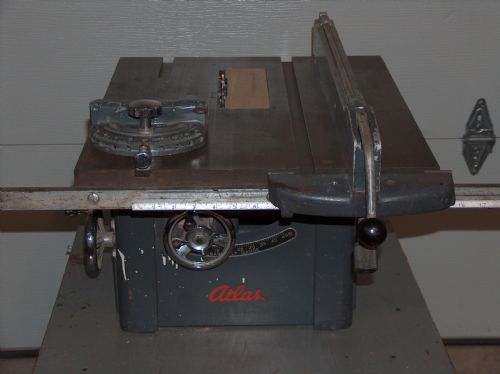Would this be a big improvement over what I have ?
All other things being more or less equal, probably. The open "latticework" wings are going to be vastly more rigid than stamped steel, so if the top and wings are flat and true (check it with a straight edge), and the motor is still good it would be a good step up.
Generally, you don't need support under every square inch of a piece of stock to get a good cut. All that really matters, ultimately, is the relationship of the work piece to the blade at the point of the cut. Wings, outfeed tables, support stands etc., are all about servicing that relationship. Most dimensional lumber and sheet goods are rigid enough so that if you have support every foot or two of length and that support is in the same plane as your saw top next to the blade you're fine. Actually, less surface contact can be a minor advantage as there will be less friction on the work piece.
My first table saw was an old 9" Delta Rockwell combo with a 4" joiner. As you can see in the photo there was very little table, particularly to to the left of the blade and no outfeed space at all, but I made a spring clamp support bar that rested on the fence rails (pictured) and used support stands on the left and for the outfeed.
As Mike Davis intimated if you are working with some gnarly wood that has knots and whatnot projecting off of it, or you have some "potato chip" plywood you're trying to cut down you may have some risk of snagging a projection or corner in the lattice, but even on a solid top you need to flip those problems up rather than down. It's just a matter of thinking and planning the cut.
As others have said I would also be concerned about safety features of the saws like guards, a riving knife or splitter, but there are aftermarket and shop-made solutions to some of those problems.
What would it possibly be worth ?
I have no idea. Ultimately you have to decide what is is worth to you.


